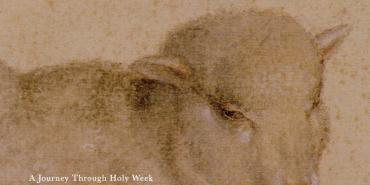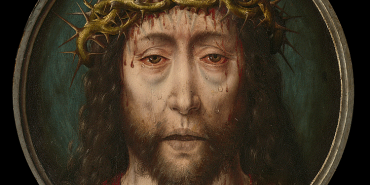The Story Continues

I first fell in love with the Story in a Sunday school class when I was young. I listened with wonder as my teacher told stories of faraway places like Egypt, where a princess could call someone else’s mother to feed her adopted baby that she pulled from the river, and amazing people like the Queen of Sheba, who traveled far to hear the wise King Solomon. I was captivated by the events that forced an expecting young woman and her fiancé to journey to his hometown of Bethlehem during her final stages of pregnancy for a census.
The stories were colorful, vibrant, and diverse. They pulled me in and whispered promises of small boys defeating giants, of young women saving their people, and of a mighty God who can overcome any enemy in the world.
I was further astounded by the Story as I sat in class, listening to American missionaries teach about hermeneutics and theology and about great teachers such as Martin Luther, John Calvin, and John Wesley. I received rules and regulations that were to be used to interpret and explain the Story, and I started wondering about some of the interpretations that I heard from my pulpit at home. These stories were important, because they were told to me in the context of apartheid in a Soweto Township in Johannesburg, South Africa.
At meal times, I would sit around the table with young African men talking passionately about apartheid and colonization, about liberation, justice, and restoration. They mentioned names like Martin Luther King, Jr., Desmond Tutu, Frank Chicane, and Allan Boesak, and the Story would come alive again.
Their passion shed light on the Story and reminded me of the mighty God who rescued His people from Egypt and subdued the rulers of the nations, the God who loved the world so much that He gave His only Son, so that every single person on earth could experience His full salvation. Their zealous stories about the present context reminded me of Jesus Christ who died and rose triumphantly and in so doing, granted victory over sin, death, and all the evil powers in this world.
Then it was my turn to tell the Story.
In my context in Africa, I had the unique challenge of telling the Story in societies ridden with poverty and need, plagued by alcoholism and drug abuse. I had to tell the Story to people who had lost loved ones—sometimes more than one person per family—to HIV/AIDS. I told the Story to people whose desperate life situations sometimes tempted them to return to consult the ancestors. I told the Story to single women, abused women, and courageous women. My dearest pleasure was to tell the Story to children who, like me, faced a confusing world.
I told orphans about a loving Father who has a mansion prepared for us in heaven, and vulnerable children about a Good Shepherd who prepares a table for them. I told angry teenagers about Jesus, who understands their pain and suffering.
Now I find myself in a new context in Kansas City, USA, and I am amazed at how differently they tell the Story here. They tell it calmly and rationally, and emotionalism is often set aside. Secularism, postmodernism, the danger of consumerism, the need for social justice, and care of the environment are sentiments I often hear. I am not surprised that the Story is told so differently here, because life is so different here. That is the wonder of the Story: it is alive, and like a diamond, a new context sheds new light on it.
Elsa Tamez explains the relationship between present context and biblical context like this: "There occurs a mutual illumination. The life-light shines and kindles the light of the text and this, in turn, illuminates life, showing usable meanings, be it to resist, to understand or to transform painful realities."1
One difference I have noticed is that here in America, the Story starts with the text, while in Africa, it begins with the present context. Africans go to the Bible with their painful questions and do not even pretend to be objective, because the issues lay so heavily on their souls. This approach may come across as unscientific, but it is acceptable because the Bible itself was written in a variety of contexts and is able to answer a great variety of life-questions.
Justin Ukpong, a Nigerian scholar, suggests four movements for reading the Bible in search of answers. First, we must identify the present context from which the question arises, followed by an analysis of this context. The third movement is an analysis of the text’s context as well as of the text itself, using various methods. Finally, we reach conclusions based on the process followed.2
Ukpong further states that this method of Bible reading is effective because the Bible is sacred and can speak in modern times. Historical-critical tools are used to get to the heart of the theological meaning, and the Bible is plurivalent, which means that it can have many meanings or degrees of capability.3 This method of interpreting is becoming more prevalent as the church is spreading on the continents of Africa, Asia, and South America. People from all around the world are speaking up, insisting that their voices be heard as they participate in telling the Story.
My new context has given me a fresh opportunity: an opportunity to listen, to learn, and to reserve judgment.
I am learning to hear the Story from a new perspective. I have had the distinct privilege to hear the incredible, captivating Story of God from my American, Australian, and Asian brothers and sisters and to live and share in their stories. I am honored to share God's movement in Africa with them and to return the favor of shared knowledge.
All of us, regardless of our current circumstances or cultures, are invited to play our part in telling the Story of God. This is the wonder of the Story: that every tribe, tongue, and nation come together to make up the Story of God’s redemptive work in the world.
Samantha Chambo is a fervent preacher and teacher of the Word, traveling and speaking worldwide for the Church of the Nazarene. Chambo holds a master’s degree in theology from the University of Manchester and is working on her PhD in biblical studies from the same institute. She and her husband live in Kansas City.
1. Tamez, Elsa, “Reading the Bible under a Sky without Stars,” in The Bible in a World Context (Grand Rapids, Mich.: William B. Eerdmans Pub. Co., 2002), 3–16.
2. Justin Ukpong, “Rereading the Bible with African Eyes: Inculturation and Hermeneutics,” J. Theol. South. Afr. 91 (1995): 3–14.
3. Justin Ukpong, “Rereading the Bible with African Eyes: Inculturation and Hermeneutics.”
Holiness Today, July/August 2018
Please note: This article was originally published in 2018. All facts, figures, and titles were accurate to the best of our knowledge at that time but may have since changed.




